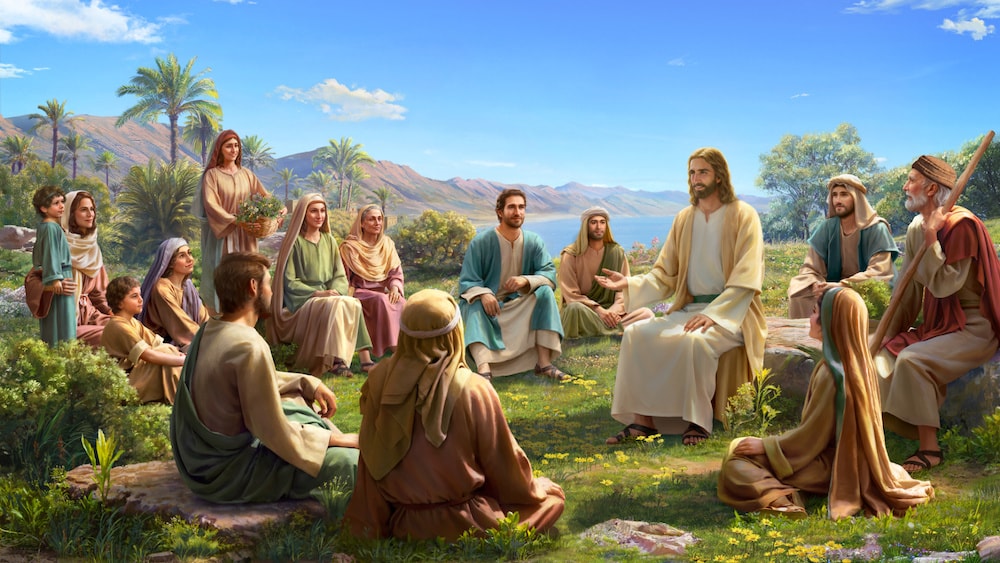Will the Lord Jesus Come Again in a Jewish Image?
Revelation 3:11 says: “Behold, I come quickly….” Many brothers and sisters in the Lord read this verse and believe that when the Lord returns, He shall still descend among His sincere believers in the image and clothes of a Jew because He ascended to heaven in a Jewish image. Just as the Bible says: “You men of Galilee, why stand you gazing up into heaven? this same Jesus, which is taken up from you into heaven, shall so come in like manner as you have seen him go into heaven” (Acts 1:11). We have waited for so many years, and now in the last days, prophecies of the return of the Lord have come true. However, none of us see the Lord Jesus arrive among us in the image of a Jew. We can’t help but wonder: Will the Lord really appear to us in a Jewish image when He returns? We ought to clarify this issue for this indeed, is with regard to the great matter of whether we can welcome the Lord’s return. Let’s look back on what kind of images God took when He appeared to man.

In the Age of Law, God appeared to Moses in the brambles and fire (referring to Exodus 3:1-4). In the Age of Grace, although God became flesh in the image of the Lord Jesus and did His work in Judea for several years, He didn’t ask man to memorize His Jewish image. For instance, the Lord Jesus was once transfigured before His disciples, with His face shining like the sun, which was definitely not a Jewish image (referring to Matthew 17:2); after He was nailed to the cross and resurrected, His image was not the previous image, so the two disciples on their way to Emmaus and Mary Magdalene didn’t recognize Him. From this, we know that the image in which God appears to man is not unchangeable, and that God’s image is beyond man’s definition. God’s words say: “God being the greatest throughout the universe and in the realm above, could He fully explain Himself using the image of a flesh? God clothes Himself in this flesh in order to do one stage of His work. There is no particular significance to this image of the flesh, it bears no relation to the passing of ages, nor does it have anything to do with God’s disposition. Why did Jesus not allow the image of Him to remain? Why did He not let man paint His image so that it could be passed on to later generations? Why did He not allow people to acknowledge that His image was the image of God? Although the image of man was created in the image of God, would it have been possible for the appearance of man to represent the exalted image of God? When God becomes flesh, He merely descends from heaven into a particular flesh. It is His Spirit that descends into a flesh, through which He does the work of the Spirit. It is the Spirit that is expressed in the flesh, and it is the Spirit who does His work in the flesh. The work done in the flesh fully represents the Spirit, and the flesh is for the sake of the work, but that does not mean that the image of the flesh is a substitute for the true image of God Himself; this is not the purpose or the significance of God become flesh. He becomes flesh only so that the Spirit may find a place to reside that suits His working, the better to achieve His work in the flesh, so that people can see His deeds, understand His disposition, hear His words, and know the wonder of His work. His name represents His disposition, His work represents His identity, but He has never said that His appearance in the flesh represents His image; that is merely a notion of man. And so, the crucial aspects of the incarnation of God are His name, His work, His disposition, and His gender. These are used to represent His management in this age. His appearance in the flesh bears no relation to His management, being merely for the sake of His work at the time. Yet it is impossible for God incarnate to have no particular appearance, and so He chooses the appropriate family to determine His appearance. If the appearance of God were to have representative significance, then all those who possess facial features similar to His would also represent God. Would that not be an egregious mistake? The portrait of Jesus was painted by man in order that man might worship Him. At the time, the Holy Spirit gave no special instructions, and so man passed that imagined portrait on until today. In truth, according to God’s original intention, man should not have done this. It is only the zeal of man that has caused the portrait of Jesus to remain until this day. God is Spirit, and man will never be capable of encompassing what His image is in the final analysis. His image can only be represented by His disposition.”
From God’s words, we know that God is the supreme Ruler. He is the invisible Spirit, who is formless and imageless. God can ascend to the highest place and also humble Himself to be a man. No matter which image He appears in, His substance is still God Himself. When God becomes flesh to carry out His work, it is totally because of the needs of His work, not for the purpose of replacing the true image of God Himself with the image of His flesh. The appearance of His flesh can’t represent God’s disposition or God’s true identity. The image of God incarnate has nothing to do with God’s substance or God’s true image. Only from His work and word can we know God’s disposition, substance, and identity, and that God is the truth, the way, and the life. We must not regard the appearance of God’s flesh as God’s true image or make such a conclusion that “God once took the image of a Jew, so God will look like this forever.” It is a blasphemy and slander against God. Whatever image God takes, it is God’s business and is not up to us humans. Moreover, what image God takes is related to the location of His work. For example, in the Age of Grace, God became flesh in Judea and did His work among the Jews, so He bore a Jewish image, wore the clothes of the Jews, and spoke Hebrew. In this way, it was relatively easy for the Jews to contact Him and know more about His words and work and thus receive His salvation. Thus, it is so logical that wherever God becomes flesh to do His work, He will take the image of people there. But we should know that no matter which country’s people God incarnate resembles in appearance, His substance is still God Himself, which is beyond all doubt.
In short, no matter what image God takes, where He appears, or in which way He appears to man, God still accomplishes His own work. We shouldn’t confine God within a limited scope or within our notions and imaginations, thinking that God will surely reappear in the image of the Lord Jesus. We should come out of our own notions and imaginations to seek and investigate the truth, and only in this way will we see the appearance of God and truly welcome the return of the Lord. Just as God’s words say: “The aim of God’s appearance, free from the constraints of any form or nation, is to enable Him to complete His work as He has planned it. This is just as when God became flesh in Judea: His aim was to complete the work of the crucifixion in redeeming the entire human race. Yet the Jews believed that it was impossible for God to do this, and they thought it impossible that God could become flesh and assume the form of the Lord Jesus. Their ‘impossible’ became the basis on which they condemned and opposed God, and ultimately led to the destruction of Israel. Today, many people have committed a similar error. They proclaim with all their might the imminent appearance of God, yet at the same time condemn His appearance; their ‘impossible’ once more confines the appearance of God within the limits of their imagination. … Let go of your opinions about the ‘impossible’! The more that people believe something is impossible, the more likely it is to occur, because the wisdom of God soars higher than the heavens, God’s thoughts are higher than man’s thoughts, and the work of God transcends the limits of man’s thinking and notions. The more that something is impossible, the more it has truth that can be sought; the more something lies beyond man’s notions and imagination, the more it contains the will of God.”
Recommended:










